The Sony Corporation (NYSE:SNE), headquartered in Tokyo, Japan, is a corporation focused on the development of a very diversified portfolio of electronics products, from video games to home appliance to medical technologies.
There have been those who have criticized Sony’s focus on innovation, stating that the company has been lacking the synergy in product development that has helped Apple, Google and others maintain a strong standing in consumer electronics. According to Sony’s corporate website, recent research and development has focused on developing eco-conscious versions of its laptops, smartphones and more. Yet Sony has increased its investment in R&D, spending $4.78 billion USD (485 billion yen) this fiscal year, a four percent increase over Sony’s previous year R&D expenditures.
Sony’s corporate struggles perhaps stem from this inability to have developed a product to dominate any individual market. Its recent gambit in smartphones helped to contribute to the $2.1 billion annual loss that was announced by the company in September of last 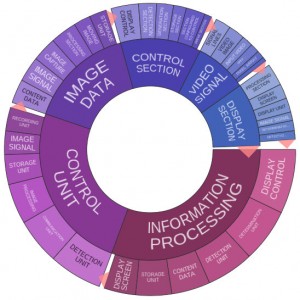 year. The next major product which Sony plans to unveil is the SmartEyeglass device which will mark the company’s first foray into wearable tech. A three-year corporate plan recently outlined by Sony includes a growing focus on sensor technology while spinning off its video-and-sound business away from the company.
year. The next major product which Sony plans to unveil is the SmartEyeglass device which will mark the company’s first foray into wearable tech. A three-year corporate plan recently outlined by Sony includes a growing focus on sensor technology while spinning off its video-and-sound business away from the company.
Despite the criticisms of Sony’s R&D activities, the company certainly isn’t lacking for patent rights. During 2014, the company ranked 4th-overall in the world in terms of U.S. patent grants earned that year; its 3,224 patents assigned last year by the U.S. Patent and Trademark Office trailed only IBM, Samsung and Canon. Using Innography’s patent analysis tools, we saw a slight discrepancy in 2014 patent totals, although the 3,573 U.S. patents surveyed also include some from Sony Mobile Communications and other subsidiaries. The text cluster posted here indicates that much of the company’s recent R&D has focused on digital technologies, including information processing, control units and image data.
[Companies-1]
Sony’s Issued Patents: From Video Gaming Tournaments to Pillows for Napping
 Video and computer gaming technologies were at the center of a number of Sony patents we noticed during our most recent survey of the company’s innovations. Tactile feedback for game players, such as the vibration forces imparted by video game controllers, provided by portable touchscreen devices is described within U.S. Patent No. 8956230, issued under the title Haptic Device for 3-D Gaming. The haptic stylus interface device protected by this patent is made up of a stylus capable of providing feedback forces and having a surface contact ball capable of rotating in place, a communications module enabling information transfer with a computer and a contact ball gripping mechanism to produce a variable contact ball friction force independent of the feedback forces. A game event is triggered by the stylus through a rotary motion completed when the stylus is not contacting a surface and the stylus further assists gameplay by more convincingly simulating the manipulation of displayed objects. More robust chat forums for online gamers to advertise tournaments would result from the technology disclosed by U.S. Patent No. 8956232, which is titled Special Regional Online Video Game Forum Based on Location. The method of identifying a special forum in a video game claimed here involves determining a first common demographic profile of players of an online game, automatically creating a first in-game forum to enable game play based on the determination, sending a first invite to join the in-game forum to some of the players matching a common demographic profile, determining a second common demographic
Video and computer gaming technologies were at the center of a number of Sony patents we noticed during our most recent survey of the company’s innovations. Tactile feedback for game players, such as the vibration forces imparted by video game controllers, provided by portable touchscreen devices is described within U.S. Patent No. 8956230, issued under the title Haptic Device for 3-D Gaming. The haptic stylus interface device protected by this patent is made up of a stylus capable of providing feedback forces and having a surface contact ball capable of rotating in place, a communications module enabling information transfer with a computer and a contact ball gripping mechanism to produce a variable contact ball friction force independent of the feedback forces. A game event is triggered by the stylus through a rotary motion completed when the stylus is not contacting a surface and the stylus further assists gameplay by more convincingly simulating the manipulation of displayed objects. More robust chat forums for online gamers to advertise tournaments would result from the technology disclosed by U.S. Patent No. 8956232, which is titled Special Regional Online Video Game Forum Based on Location. The method of identifying a special forum in a video game claimed here involves determining a first common demographic profile of players of an online game, automatically creating a first in-game forum to enable game play based on the determination, sending a first invite to join the in-game forum to some of the players matching a common demographic profile, determining a second common demographic 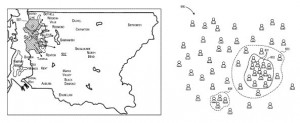 profile, automatically creating a second in-game forum for the second common demographic profile, sending invitations and enabling the two groups to compete against each other in the online video game. This enables a video game to dynamically create tournaments that pit players of different geographical regions or different gameplay styles against each other.
profile, automatically creating a second in-game forum for the second common demographic profile, sending invitations and enabling the two groups to compete against each other in the online video game. This enables a video game to dynamically create tournaments that pit players of different geographical regions or different gameplay styles against each other.
Computer editing of video to create more lifelike surfaces in animated graphics is also being pursued by Sony R&D, as is evidenced by U.S. Patent No. 8957907, which is titled Fill-Volume Techniques for Use in a Hair/Fur Pipeline. The patent claims a computer system for generating hair that includes a memory including a hair pipeline made up of a surface definition module to generate a shape defining surfaces and define control hairs to be rendered, a control hair module to fill an associated volume with control hairs randomly placed across the volume, an interpolation module to interpolate final hair strands from the random control hairs, an effects module that clumps selected interpolated final hair strands to one another and a display module to display randomly placed control hairs and the interpolated final hair strands. This computer graphics technique is capable of reproducing more realistic mammal hair and better simulate the appearance of wet hair.
Emergency contact systems enabled by Internet-connected television sets are the focus of U.S. Patent No. 8959545, issued under the title Reverse 911 Using TV. The patent claims a TV system comprising a TV display and a processor for receiving an emergency alert from the Internet which causes a prompt to be presented on the display acknowledging the alert. The processor disables a user’s ability to tune away from a channel on which an alert is received until an acknowledgement of the alert is received. This system enables emergency officials to transmit an alert or warning to a recipient’s TV and ensure which television sets were on to receive the alert message.
Technologies that would allow more energy producers to trade generated energy on the market, especially producers of small amounts of generated energy, are described within U.S. Patent No. 8943324, titled Green Energy Generation Apparatus, Mobile Device, Electric Storage Apparatus, and Management Method of Green Energy Information. The patent protects a method for authenticating characteristics of electrical energy by acquiring a key and an amount of electrical energy generated by a household green energy generation apparatus, generating a digital signature based on the amount and the key and generating a certificate comprising the signature and the amount. This technology for authenticating green energy generated by individual electric energy consumers for selling the surplus to an energy market.
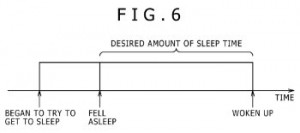 Sony has also developed a sleep aid designed to help users more effectively sleep for short periods of time, which our readers can see in U.S. Patent No. 8939884, which is titled Sleep Aid Device and Method, Program and Recording Medium. The sleep aid device protected here involves a pillow that contains an electrode on a pillow surface and a spring in contact with the electrode configured to move the electrode around on the pillow’s surface. The electrode is configured to come into contact with a person’s scalp to acquire brain wave signals of a person which are analyzed to determine a depth of sleep of the user. This technology is capable of determining when a person has entered a sufficiently deep level of sleep to set an alarm, ensuring that person receives enough sleep even during a short nap.
Sony has also developed a sleep aid designed to help users more effectively sleep for short periods of time, which our readers can see in U.S. Patent No. 8939884, which is titled Sleep Aid Device and Method, Program and Recording Medium. The sleep aid device protected here involves a pillow that contains an electrode on a pillow surface and a spring in contact with the electrode configured to move the electrode around on the pillow’s surface. The electrode is configured to come into contact with a person’s scalp to acquire brain wave signals of a person which are analyzed to determine a depth of sleep of the user. This technology is capable of determining when a person has entered a sufficiently deep level of sleep to set an alarm, ensuring that person receives enough sleep even during a short nap.
[Companies-3]
Patent Applications of Note: From Biomechanically-Enhanced Prostheses to Wet Mode Touchscreens
In our check-in with Sony’s recently filed patent applications, we noted a fair amount that pertained to more video gaming improvements. Another innovation for video games with an eye towards increasing interactions among local players is featured within U.S. Patent Application No. 20150018103, filed under the title Location-Based Leaderboard. This patent application would protect a method of associating the location of a computer system user with a sub-region of the world and obtaining the rank of a user within a region or sub-region associated with the user’s location based upon statistics associated with the user. The invention results in a 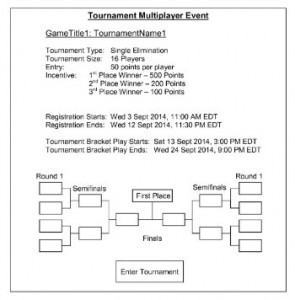 system capable of building a regional video gaming leaderboard for the city, county or state level. A novel system that rewards users for interacting with video games and other content available through a console is discussed by U.S. Patent Application No. 20150045110, which is titled Metagame Reward Point System. The computing system claimed by this patent application includes computer readable instructions stored by a memory unit and executed to perform a method of receiving information regarding user actions performed through user inputs in at least one computing device and changing a point total based on user actions, including the outcomes of multiplayer video game events. This innovation would enable a point system that awards points redeemable for certain services based on user interaction with music, social networking and other console applications other than video games; these points could also be transferrable based on the outcome of certain multiplayer gaming events.
system capable of building a regional video gaming leaderboard for the city, county or state level. A novel system that rewards users for interacting with video games and other content available through a console is discussed by U.S. Patent Application No. 20150045110, which is titled Metagame Reward Point System. The computing system claimed by this patent application includes computer readable instructions stored by a memory unit and executed to perform a method of receiving information regarding user actions performed through user inputs in at least one computing device and changing a point total based on user actions, including the outcomes of multiplayer video game events. This innovation would enable a point system that awards points redeemable for certain services based on user interaction with music, social networking and other console applications other than video games; these points could also be transferrable based on the outcome of certain multiplayer gaming events.
We also wanted to share a trio of patent applications discussing some intriguing technologies for healthcare and medical applications. A prosthesis for amputees that could also improve the efficiency of biomechanics involved in walking and running in non-amputees is the focus of U.S. Patent Application No. 20150018975, filed under the title Movement Support Apparatus. The patent application would protect a movement support apparatus including a lower limb coupling portion, an elastic member, a ground contact unit with a ground contact plate and a transmission portion transmitting force generated by the elastic member and an ankle portion installed between the lower limb coupling unit and the ground contact unit. This technology could restore movement to those with lower limb amputations or improve the movement of those whose mobility has suffered from aging or muscle weakness. Improvements to endoscopic surgery would be provided by the imaging innovation outlined within U.S. Patent Application No. 20150015461, filed under the title Head-Mounted Display. The head-mounted display claimed here includes a detector for detecting an angle of tilt of the head-mounted display and an output unit for outputting an indication of the angle of tilt. This innovation is intended to overcome a 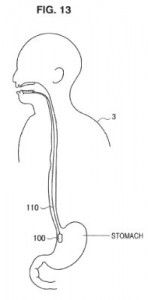 shortcoming in using head-mounted devices, which sometimes must be shifted during a procedure to alleviate a blurred or out-of-focus image but cannot be touched by the operating surgeon wearing the device. A medical device for administering a medication at regular intervals while within a patient’s body is at the center of U.S. Patent Application No. 20150051589, which is titled Capsule Type Medical Device and Medical System. This patent application would protect a capsule type medical device capable of being suspended in a body cavity and perform continuous treatment while being suspended. In one embodiment, the invention is a capsule that could be swallowed once daily to spray medication while in the stomach a few times each day.
shortcoming in using head-mounted devices, which sometimes must be shifted during a procedure to alleviate a blurred or out-of-focus image but cannot be touched by the operating surgeon wearing the device. A medical device for administering a medication at regular intervals while within a patient’s body is at the center of U.S. Patent Application No. 20150051589, which is titled Capsule Type Medical Device and Medical System. This patent application would protect a capsule type medical device capable of being suspended in a body cavity and perform continuous treatment while being suspended. In one embodiment, the invention is a capsule that could be swallowed once daily to spray medication while in the stomach a few times each day.
The effects of water on touchscreen functionality are addressed by the technology that would be protected by U.S. Patent Application No. 20150022481, which is titled Dry/Wet Touch Screen. The method for switching between a dry mode and wet mode for a mobile device touchscreen claimed here involves determining a first capacitance on a mobile device touchscreen using a sensor, determining that capacitance when the touchscreen is submerged under water, comparing that capacitance to a threshold capacitance, determining that the first capacitance is greater than or equal to the threshold capacitance and, if equal or greater, switching the touchscreen to a wet mode that can determine the location of a user’s touch underwater. This technology is designed to improve mobile device functionality for devices that are waterproof but include touchscreens which are difficult to operate while wet.
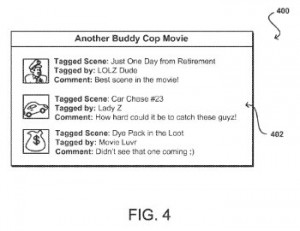 Finally, we were intrigued to take a closer look at a Sony invention for determining information of an item of interest encountered while watching a movie or enjoying other digital content. U.S. Patent Application No. 20150026716, which is titled Media Fingerprinting for Social Networking, claims a computer-implemented method of receiving a matching request including information corresponding to a captured media file that includes audio and video data as well as links to an advertisement, comparing captured media file information to stored instances of media data to locate a match for the captured media file information, determining supplemental information corresponding to the advertisement and enabling the user to provide the supplemental information to other users through a content sharing mechanism. This system is capable of helping a user quickly determine an actor in a scene, the title of a movie being watched and information associated with products shown in a movie scene; the system also enables a user to share that information with friends who may be interested in that content.
Finally, we were intrigued to take a closer look at a Sony invention for determining information of an item of interest encountered while watching a movie or enjoying other digital content. U.S. Patent Application No. 20150026716, which is titled Media Fingerprinting for Social Networking, claims a computer-implemented method of receiving a matching request including information corresponding to a captured media file that includes audio and video data as well as links to an advertisement, comparing captured media file information to stored instances of media data to locate a match for the captured media file information, determining supplemental information corresponding to the advertisement and enabling the user to provide the supplemental information to other users through a content sharing mechanism. This system is capable of helping a user quickly determine an actor in a scene, the title of a movie being watched and information associated with products shown in a movie scene; the system also enables a user to share that information with friends who may be interested in that content.

![[IPWatchdog Logo]](https://ipwatchdog.com/wp-content/themes/IPWatchdog%20-%202023/assets/images/temp/logo-small@2x.png)

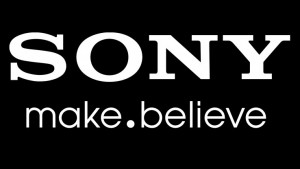
![[Advertisement]](https://ipwatchdog.com/wp-content/uploads/2024/04/Patent-Litigation-Masters-2024-sidebar-early-bird-ends-Apr-21-last-chance-700x500-1.jpg)

![[Advertisement]](https://ipwatchdog.com/wp-content/uploads/2021/12/WEBINAR-336-x-280-px.png)
![[Advertisement]](https://ipwatchdog.com/wp-content/uploads/2021/12/2021-Patent-Practice-on-Demand-recorded-Feb-2021-336-x-280.jpg)
![[Advertisement]](https://ipwatchdog.com/wp-content/uploads/2021/12/Ad-4-The-Invent-Patent-System™.png)







Join the Discussion
No comments yet.